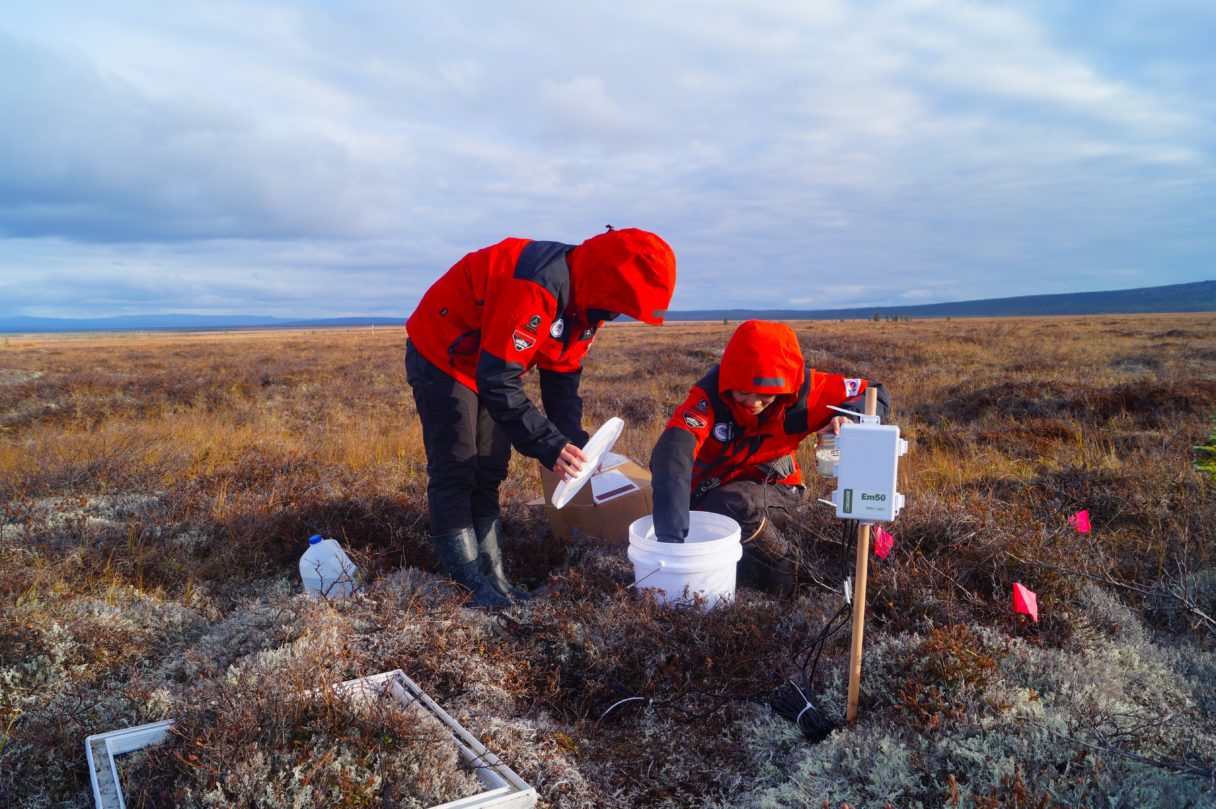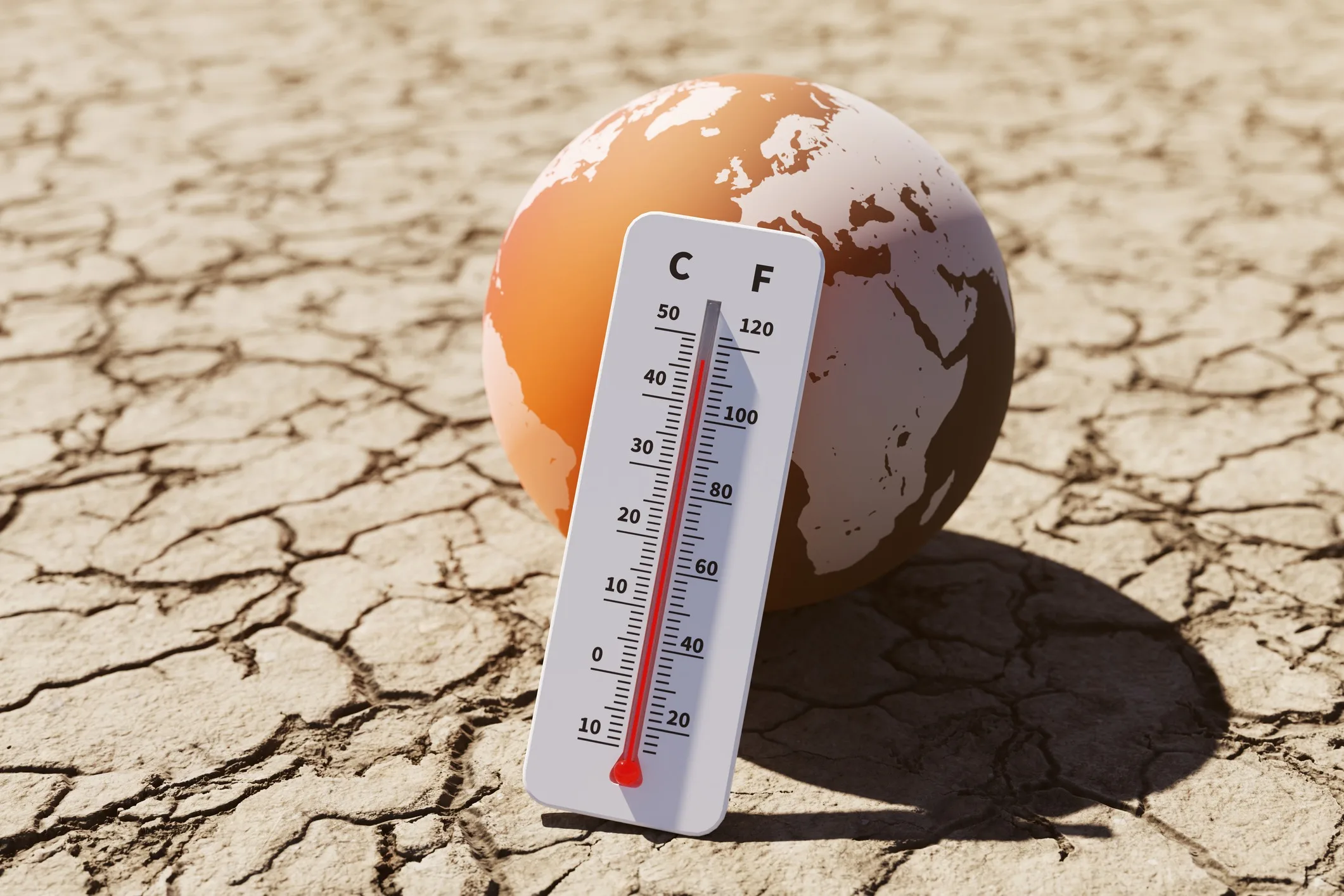Home>Weather and Climate>The Impact Of Rising Temperatures On The Spread Of Dangerous Fungi


Weather and Climate
The Impact Of Rising Temperatures On The Spread Of Dangerous Fungi
Published: April 3, 2024
Discover how weather and climate changes are influencing the proliferation of hazardous fungi, and the potential risks associated with rising temperatures. Explore the impact now.
(Many of the links in this article redirect to a specific reviewed product. Your purchase of these products through affiliate links helps to generate commission for Temperatures.com, at no extra cost. Learn more)
Table of Contents
- Introduction
- Understanding the Relationship Between Temperature and Fungal Growth
- The Impact of Rising Temperatures on Fungal Spore Production
- How Climate Change is Expanding the Geographic Range of Dangerous Fungi
- The Role of Temperature in Fungal Pathogenicity
- Implications for Human Health and Agriculture
- Strategies for Mitigating the Spread of Dangerous Fungi in a Warming World
Introduction
The Earth's climate is undergoing significant changes, with rising temperatures being a prominent feature of this transformation. As global temperatures continue to climb, the impact of this shift extends beyond the realms of melting ice caps and extreme weather events. One of the lesser-known consequences of rising temperatures is the proliferation and spread of dangerous fungi, which poses a threat to both human health and agricultural productivity.
The relationship between temperature and fungal growth is a complex and intricate one, influenced by a myriad of factors. Understanding this relationship is crucial in comprehending the implications of climate change on the prevalence and distribution of harmful fungi. By delving into the mechanisms through which rising temperatures facilitate the spread of these organisms, we can gain valuable insights into the potential risks they pose to ecosystems, human populations, and agricultural systems.
In this article, we will explore the intricate interplay between temperature and fungal proliferation, shedding light on the ways in which climate change is altering the dynamics of fungal communities. From the impact of rising temperatures on fungal spore production to the expansion of the geographic range of dangerous fungi, we will delve into the multifaceted implications of this phenomenon. Furthermore, we will examine the role of temperature in enhancing the pathogenicity of fungi, elucidating the potential ramifications for human health and agricultural sustainability.
As we navigate through these interconnected themes, it becomes evident that the implications of rising temperatures on the spread of dangerous fungi are far-reaching and multifaceted. By unraveling the complexities of this relationship, we can pave the way for informed strategies aimed at mitigating the adverse effects of fungal proliferation in a warming world. Join us on this journey as we unravel the intricate web of interactions between temperature and dangerous fungi, and explore potential avenues for addressing this pressing environmental and public health concern.
Understanding the Relationship Between Temperature and Fungal Growth
The relationship between temperature and fungal growth is a fundamental aspect of fungal ecology, playing a pivotal role in shaping the dynamics of fungal communities across diverse ecosystems. Temperature exerts a profound influence on the growth, reproduction, and metabolic activities of fungi, thereby dictating their distribution and prevalence in the natural environment. Understanding this intricate relationship is essential in comprehending the impact of rising temperatures on the proliferation of dangerous fungi.
Temperature serves as a critical environmental factor that directly influences the growth and development of fungi. Fungal species exhibit distinct temperature preferences, with some thriving in cooler environments while others favor warmer conditions. The range of temperatures conducive to fungal growth varies widely among different species, reflecting their evolutionary adaptations to specific ecological niches. For instance, certain pathogenic fungi responsible for plant diseases exhibit optimal growth at relatively higher temperatures, while others thrive in cooler, more temperate climates.
Moreover, temperature not only influences the rate of fungal growth but also governs key physiological processes within fungal cells. Enzyme activity, respiration, and the production of secondary metabolites are intricately linked to temperature, with variations in temperature exerting direct effects on these metabolic pathways. As temperatures rise, the metabolic rates of fungi often increase, leading to accelerated growth and reproduction under favorable conditions. Conversely, extreme temperatures can disrupt vital cellular processes, impacting the overall fitness and survival of fungal populations.
In addition to direct effects on fungal physiology, temperature also modulates interactions between fungi and their biotic and abiotic surroundings. For instance, temperature influences the availability of nutrients, water, and other resources essential for fungal growth, thereby shaping their ecological interactions with other organisms. Furthermore, temperature fluctuations can alter the composition and diversity of fungal communities, potentially favoring the proliferation of certain pathogenic species under specific climatic conditions.
By unraveling the intricate interplay between temperature and fungal growth, we gain valuable insights into the mechanisms underlying the response of fungi to changing environmental conditions. This understanding forms the foundation for assessing the potential consequences of rising temperatures on the prevalence and distribution of dangerous fungi, providing a basis for devising proactive measures to mitigate their impact on ecosystems, human health, and agricultural productivity.
The Impact of Rising Temperatures on Fungal Spore Production
Rising temperatures exert a profound influence on the production and dispersal of fungal spores, thereby shaping the dynamics of fungal populations in diverse ecosystems. As temperatures increase, the life cycles of many fungi undergo significant alterations, leading to enhanced spore production and dispersal under favorable climatic conditions.
One of the key mechanisms through which rising temperatures impact fungal spore production is through the modulation of reproductive strategies. Many fungal species exhibit a remarkable degree of plasticity in their reproductive behaviors, with temperature serving as a critical cue for triggering spore formation and release. As temperatures rise, the reproductive structures of fungi, such as fruiting bodies and sporangia, undergo accelerated development, leading to increased spore production. Furthermore, elevated temperatures can stimulate the synchronization of spore release, promoting the dispersal of large quantities of spores into the surrounding environment.
In addition to direct effects on reproductive structures, rising temperatures can influence the metabolic pathways involved in spore formation. Fungi often respond to temperature fluctuations by adjusting their metabolic activities to optimize spore production. Elevated temperatures can stimulate the upregulation of genes associated with spore development, leading to the enhanced synthesis of spores within fungal colonies. Moreover, the accelerated metabolic rates of fungi under warmer conditions can expedite the maturation of spores, hastening their readiness for dispersal.
Furthermore, rising temperatures can impact the interactions between fungi and their host organisms, leading to alterations in spore production. Many pathogenic fungi exhibit temperature-dependent interactions with their host plants or animals, with elevated temperatures often favoring the proliferation of these fungi. As the host organisms respond to rising temperatures, the susceptibility to fungal infections may increase, leading to enhanced spore production by the pathogens. This phenomenon is particularly relevant in agricultural settings, where rising temperatures can exacerbate the incidence of fungal diseases, leading to significant losses in crop yields.
By unraveling the intricate ways in which rising temperatures influence fungal spore production, we gain valuable insights into the potential consequences for ecosystem dynamics, agricultural productivity, and human health. The enhanced spore production facilitated by rising temperatures can contribute to the spread of dangerous fungi, posing challenges for disease management and ecological balance. Understanding these dynamics is essential for devising proactive strategies aimed at mitigating the impact of rising temperatures on fungal spore production and dispersal, thereby safeguarding the resilience of ecosystems and agricultural systems in a changing climate.
How Climate Change is Expanding the Geographic Range of Dangerous Fungi
Climate change is exerting a profound influence on the geographic distribution of dangerous fungi, leading to notable shifts in their range and prevalence across diverse ecosystems. As global temperatures continue to rise, the habitats suitable for the growth and proliferation of dangerous fungi are expanding, transcending traditional climatic boundaries and encroaching into new territories. This phenomenon has significant implications for ecological dynamics, agricultural sustainability, and public health, underscoring the far-reaching consequences of climate-induced alterations in fungal distributions.
One of the primary mechanisms through which climate change is driving the expansion of the geographic range of dangerous fungi is through the modification of environmental conditions. As temperatures increase, previously inhospitable regions may become conducive to the establishment and persistence of fungal species that were once limited by cooler climates. This phenomenon is particularly evident in high-latitude and high-altitude regions, where rising temperatures are facilitating the colonization of dangerous fungi in previously unexplored habitats. Furthermore, the alteration of precipitation patterns and humidity levels associated with climate change can create favorable conditions for the growth and dissemination of fungal spores, further contributing to the expansion of their geographic range.
Moreover, climate change is fostering the dispersal of fungal spores across vast distances, enabling dangerous fungi to colonize new areas beyond their historical ranges. Changes in wind patterns, precipitation regimes, and temperature gradients can facilitate the long-distance transport of fungal spores, allowing them to reach distant locations where they can establish new populations. This phenomenon is particularly relevant in the context of agricultural systems, where the introduction of invasive fungal pathogens due to climate-driven dispersal can pose significant challenges for disease management and crop protection.
Furthermore, the interconnected nature of ecosystems and the global movement of goods and commodities contribute to the transboundary spread of dangerous fungi in a changing climate. Climate-induced alterations in the distribution of host plants and animals can influence the availability of suitable habitats for fungal colonization, leading to shifts in the geographic range of dangerous fungi. Additionally, international trade and travel serve as conduits for the inadvertent introduction of fungal pathogens to new regions, amplifying the potential for their establishment in novel environments.
By elucidating the mechanisms through which climate change is expanding the geographic range of dangerous fungi, we gain valuable insights into the complexities of this phenomenon. The implications of this expansion are multifaceted, encompassing ecological disruptions, agricultural challenges, and public health risks. Understanding these dynamics is essential for devising proactive measures aimed at mitigating the impact of climate-induced shifts in fungal distributions, thereby safeguarding the resilience of ecosystems and agricultural systems in a changing climate.
The Role of Temperature in Fungal Pathogenicity
The role of temperature in fungal pathogenicity is a critical determinant of the dynamics of fungal diseases in both natural ecosystems and agricultural settings. Temperature exerts a profound influence on the virulence, infectivity, and adaptability of pathogenic fungi, shaping their interactions with host organisms and the broader environment. Understanding the intricate relationship between temperature and fungal pathogenicity is essential for elucidating the mechanisms through which rising temperatures can enhance the impact of fungal diseases on ecosystems, agricultural productivity, and human health.
Temperature serves as a key environmental factor that modulates the expression of virulence factors in pathogenic fungi. Many fungal pathogens exhibit temperature-dependent virulence, with their ability to cause disease being intricately linked to specific temperature ranges. For instance, certain plant pathogens are known to exhibit heightened virulence at elevated temperatures, leading to more severe disease symptoms and accelerated disease progression in host plants. This temperature-dependent modulation of virulence factors underscores the dynamic nature of fungal pathogenicity in response to environmental cues, highlighting the pivotal role of temperature in shaping the outcomes of host-pathogen interactions.
Moreover, the infectivity of pathogenic fungi is intricately linked to temperature, with variations in temperature influencing the efficiency of spore germination, host colonization, and the establishment of infection. Elevated temperatures can expedite the germination of fungal spores, leading to rapid establishment and proliferation of the pathogen within host tissues. Furthermore, temperature can influence the expression of genes associated with host adhesion, penetration, and nutrient acquisition, thereby impacting the ability of pathogenic fungi to colonize and cause disease in susceptible hosts.
Additionally, temperature plays a crucial role in shaping the adaptability of pathogenic fungi to changing environmental conditions. Fungi often exhibit remarkable plasticity in their responses to temperature fluctuations, allowing them to thrive in diverse ecological niches. As global temperatures rise, many pathogenic fungi may undergo adaptive shifts in their thermal tolerances, enabling them to exploit new habitats and host species. This phenomenon has significant implications for the emergence of novel fungal diseases and the geographic expansion of existing pathogens, underscoring the dynamic nature of fungal pathogenicity in a changing climate.
By unraveling the intricate interplay between temperature and fungal pathogenicity, we gain valuable insights into the mechanisms underlying the impact of rising temperatures on the dynamics of fungal diseases. The temperature-dependent modulation of virulence, infectivity, and adaptability in pathogenic fungi underscores the multifaceted nature of their responses to environmental cues, highlighting the need for proactive strategies aimed at mitigating the impact of climate-induced alterations in fungal pathogenicity. This understanding forms the basis for informed approaches to disease management, ecological conservation, and agricultural sustainability in the face of a warming world.
Implications for Human Health and Agriculture
The implications of rising temperatures on the spread of dangerous fungi extend far beyond ecological dynamics, encompassing significant ramifications for human health and agricultural sustainability. As global temperatures continue to climb, the prevalence and geographic range of pathogenic fungi are undergoing notable shifts, posing multifaceted challenges for disease management, food security, and public health.
In the context of human health, the proliferation of dangerous fungi driven by rising temperatures presents a heightened risk of fungal infections and associated diseases. Many pathogenic fungi exhibit temperature-dependent virulence, with elevated temperatures often amplifying their ability to cause infections in humans. This phenomenon is particularly relevant in the context of opportunistic fungal pathogens, which can exploit the immunocompromised state of individuals to cause severe and potentially life-threatening infections. Furthermore, the expansion of the geographic range of certain human-pathogenic fungi due to climate change can lead to the emergence of fungal diseases in regions where they were previously uncommon, posing challenges for healthcare systems and disease surveillance.
In agricultural settings, the impact of rising temperatures on the spread of dangerous fungi has significant implications for crop productivity, food security, and economic stability. Many fungal pathogens that affect crops exhibit temperature-dependent growth and virulence, with warmer temperatures often favoring their proliferation and the incidence of associated diseases. As a result, rising temperatures can lead to increased pressure from fungal diseases on agricultural systems, potentially leading to substantial yield losses and economic hardships for farmers. Furthermore, the geographic expansion of fungal pathogens due to climate change can necessitate the adaptation of crop management practices and the development of resilient crop varieties capable of withstanding the heightened disease pressure.
Moreover, the implications of rising temperatures on the spread of dangerous fungi intersect with broader challenges related to global food security and the sustainability of agricultural systems. The increased prevalence of fungal diseases in crops can disrupt food production, leading to potential shortages and price fluctuations in the global food market. Additionally, the reliance on fungicides and other chemical interventions to manage fungal diseases in a warming world raises concerns about environmental impacts and the development of resistance in fungal populations, necessitating the exploration of sustainable and integrated approaches to disease management.
By elucidating the implications of rising temperatures on the spread of dangerous fungi for human health and agriculture, we gain a comprehensive understanding of the multifaceted challenges posed by climate-induced alterations in fungal dynamics. This understanding forms the basis for informed strategies aimed at safeguarding human health, enhancing agricultural resilience, and promoting sustainable food production in the face of a changing climate. It underscores the urgency of proactive measures to address the complex interplay between rising temperatures and the proliferation of dangerous fungi, thereby fostering resilience and adaptation in human and agricultural systems.
Strategies for Mitigating the Spread of Dangerous Fungi in a Warming World
As the impact of rising temperatures on the proliferation of dangerous fungi becomes increasingly evident, the development and implementation of effective strategies to mitigate their spread in a warming world are of paramount importance. Proactive measures aimed at addressing the multifaceted challenges posed by climate-induced alterations in fungal dynamics are essential for safeguarding ecosystems, human health, and agricultural sustainability. The following strategies offer valuable avenues for mitigating the spread of dangerous fungi in the face of a changing climate:
-
Integrated Disease Management: Implementing integrated disease management approaches that encompass cultural, biological, and chemical control methods can help mitigate the impact of fungal diseases in agricultural systems. This holistic approach involves the strategic deployment of resistant crop varieties, cultural practices that minimize disease pressure, and the targeted use of biocontrol agents and fungicides to manage fungal pathogens effectively.
-
Surveillance and Early Detection: Establishing robust surveillance systems for monitoring the incidence and spread of dangerous fungi is crucial for early detection and rapid response to emerging threats. Timely identification of fungal diseases in both natural and agricultural settings enables proactive interventions, such as quarantine measures, targeted treatments, and the implementation of disease-resistant strategies to prevent the escalation of fungal outbreaks.
-
Climate-Resilient Crop Breeding: Investing in the development of climate-resilient crop varieties that exhibit enhanced tolerance to fungal diseases under changing temperature regimes is essential for ensuring agricultural sustainability. Breeding programs aimed at incorporating traits related to disease resistance and tolerance to temperature fluctuations can contribute to the resilience of crops in the face of heightened disease pressure driven by rising temperatures.
-
Promotion of Agroecological Practices: Encouraging the adoption of agroecological practices that prioritize biodiversity, soil health, and ecological balance can contribute to the suppression of dangerous fungi in agricultural landscapes. Practices such as crop rotation, intercropping, and the enhancement of natural enemy populations can help create environments that are less conducive to the proliferation of fungal pathogens.
-
Public Health Awareness and Education: Raising public awareness about the risks associated with fungal infections and the impact of climate change on the spread of dangerous fungi is essential for promoting preventive measures and early intervention. Education campaigns aimed at healthcare professionals, agricultural practitioners, and the general public can foster a better understanding of the linkages between rising temperatures and fungal diseases, leading to improved disease management and mitigation efforts.
-
Research and Innovation: Continued investment in research and innovation aimed at understanding the mechanisms underlying the responses of dangerous fungi to rising temperatures is critical for informing evidence-based strategies for mitigation. Advancements in fungal ecology, pathogenicity, and climate adaptation can provide valuable insights into the development of targeted interventions and sustainable management practices.
By embracing these proactive strategies, stakeholders across diverse sectors can work collaboratively to address the challenges posed by the spread of dangerous fungi in a warming world. These efforts are essential for fostering resilience, adaptation, and sustainability in the face of climate-induced alterations in fungal dynamics, ultimately contributing to the protection of ecosystems, human health, and agricultural productivity.














